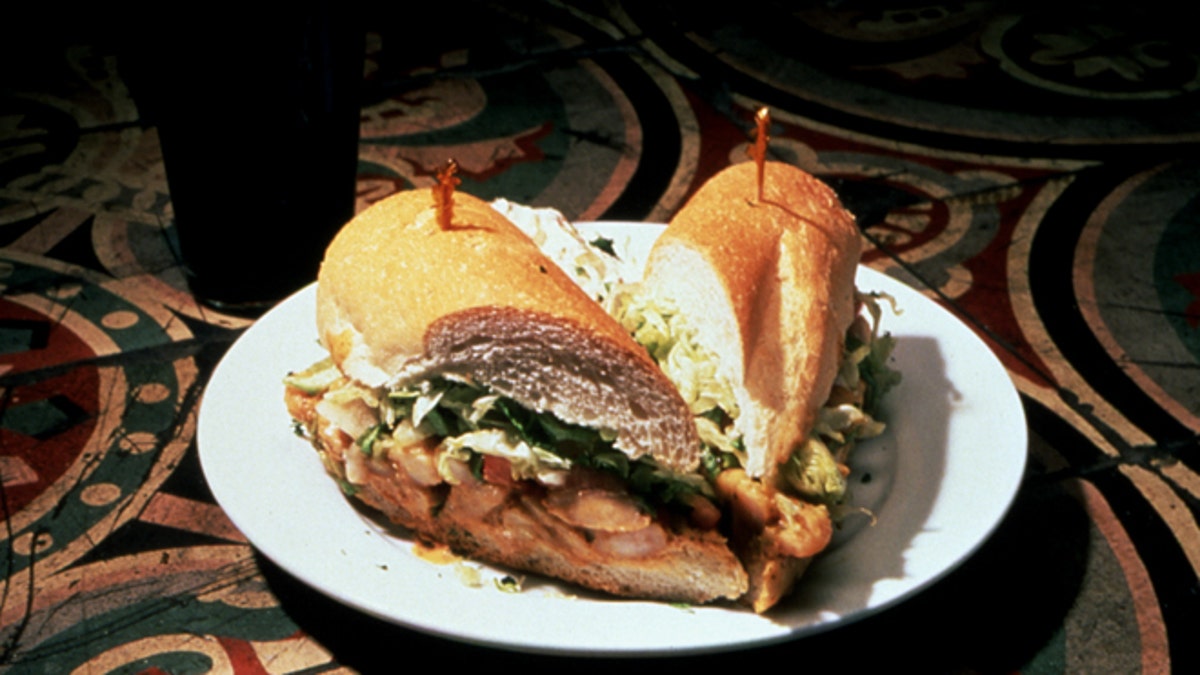
Storyville District Shrimp Po-Boy (Kurt Coste/NewOrleansOnline.com)
The po'boy sandwich, much like the muffaletta, is a fixture of New Orleans cuisine. And, like the muffaletta, it has many variations — some might argue, even more. That's because the po'boy has undergone a bit of a renaissance in New Orleans, with new kids on the block making reimagined versions with liver cheese, grilled shrimp, and roasted duck, to name a few examples. And now there's even a "Vietnamese po'boy" that's become popular, otherwise known as a banh mi, whose endearing nickname points to a growing affinity among locals for the "new" sandwich.
But even the traditional po'boys come in many variations. Walking into a typical po'boy shop in the Big Easy means confronting a nearly paralyzing array of choices, including juicy fried oysters, perfectly fried shrimp, flaky fried catfish, crunchy soft-shell crab (fried, of course), ham and cheese, sausage, or even meatballs. And let's not forget about roast beef and gravy, topped with french fries. So in figuring out how to make the ultimate po'boy, we first had to pick one.
Which one did we go with? While the first "poor boy" sandwich created in 1929 during a streetcar strike featured potatoes and beef gravy, we decided to go with the fried oyster po'boy for its fame throughout the country. So we tapped chef Brian Jupiter, New Orleans native and executive chef for Pioneer Tavern Group, for some tips on how to make the ultimate po'boy and his childhood recipe. His simple advice rests on having the right ingredients and taking the time to prepare them with loving care.
The Bread
It's often said that the bread makes the sandwich, and the po'boy is no exception to this rule. Ask a New Orleans native and they will likely point you to Leidenheimer, the leading baker of po'boy bread, or John Gendusa Bakery, which invented the bread used today. If you're not lucky enough to live anywhere near these bakeries, look for a wide, symmetrical French loaf without pointy ends. Chef Brian Jupiter says, "Don't use baguette and think that you are making a po'boy. [The] bread should be soft and airy with [a] slightly crisp crust." Go with locally made breads or breads baked in-house rather than mass-produced breads trucked across the country.
Don't Be Stingy
Load that po'boy up with a generous serving of fried seafood. "Fried seafood makes the best po'boys and don't skimp on the meat!" says Jupiter. Using shrimp as an example, he says, "Places… frustrate me when they make their shrimp po'boys with only six pieces of shrimp."
Use Cornmeal
Cornmeal and oysters go together like salt and pepper, at least when you're frying them. Cornmeal lends a distinct flavor and a nice crunch to the oysters, and is the traditional way of preparing fried oysters for po'boys. Jupiter uses a 2:1 ratio of all-purpose flour to cornmeal in his recipe.
Get Dressed
Jupiter says to always get the po'boys dressed, which in po'boy-ordering vernacular means, "Always top with shredded lettuce, tomato, pickle, and mayo." Don't get tempted to cut corners here — it's important to cut the shredded lettuce from a whole head of lettuce instead of using pre-shredded bags, and we think it's folly to bother with the tomato if it's out of season.
See all of the tips and the recipe here
More from The Daily Meal
20 Tips for How to Be a Better Home Cook
Too Good to Be True Diet Trends and What Your Should Try Instead
